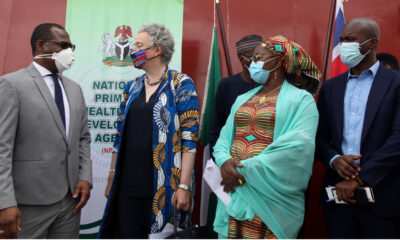Business & Economy
Resilience Of The Labour Markets During COVID-19

Labour Markets. It is said by some analysts that COVID-19 is responsible for irreversible changes in our economies, including patterns of employment. It was therefore a revelation to read the latest national income dynamics study-coronavirus rapid mobile survey (NIDS-CRAM) from South Africa.
Based upon a sample of 10,000 individuals, wave 3 (the most recent published data) shows that active employment in the country in October was just 0.15 per cent lower than the level in pre-COVID February.
The recovery has been strong. In April, when the domestic lockdown was at its height, employment was 40 per cent lower than in February and in June, when most restrictions had been eased, it was still 20 per cent down. Additionally, the data suggests that the recovery has been in all forms of employment, and not just part-time posts created by employers nervous about future economic prospects.
The three academic authors of the section of the surveys covering the labour market, two based in the US and one in the UK, noted similar trends in other emerging markets (EMs): from the low point in April, the recovery was well underway by June in Brazil and Mexico, and by August in India and Ghana.
Resilience Of The Labour Markets During COVID-19
Closer to home, we refer to COVID-19 impact monitoring, a series of publications by the National Bureau of Statistics (NBS) in partnership with the World Bank. The narrative is similar to the sixth and latest instalment of this smaller survey, which covers 1,950 households: 87 per cent of respondents were employed in October, compared with 86 per cent at the pre-COVID base (mid-March). Reflecting the structure of the economy, households are divided between urban and rural. Employment was a little behind March for the former, a little ahead for the latter.
A clear trend is apparent across selected emerging markets. There is a familiar lag in the release of data from academic sources, research foundations and official statistical bodies. Job losses may have picked up again in South Africa due to the resurgence of COVID-19 and the reimposition of some restrictions in late 2020/early 2021. This does not detract from our broader argument that these economies display resilience in employment terms once controls are eased.
We are not looking for parallels with advanced economies because of a point we have often made in these columns: that they have fiscal and other resources on a scale of which emerging market governments can only dream. You can close down the economy and pay your employed citizens not to work through a furlough scheme in an advanced economy. You can then reopen the economy and subsidize meals out for the family. In EMs your choices are far more limited. A core tool of the South African government, for example, is its social relief of distress grant, which is received by 35 per cent of all households.
READ: COVID-19 Drives Sub-Saharan Africa Toward First Recession In 25 Years
Three other conclusions from the three waves of NIDS-CRAM are worth highlighting. First, the employment trends are consistent with monthly production data from Statistics South Africa, the local counterpart of the NBS. This is true of mining, manufacturing and retail but not, for obvious reasons, of tourism. Second and tentatively, there has been an unusual increase in jobs in sales and services. Thirdly and again cautiously, earnings may have risen slightly between February and October. If we attempt to read across to Nigeria, we do not have the data for the first two conclusions while the fourth instalment of COVID-19 impact monitoring noted that two-thirds of households surveyed reported a fall in earnings.
Written by Gregory Kronsten
Head, Macroeconomic and Fixed Income Research, FBNQuest

















